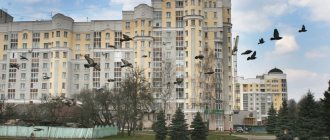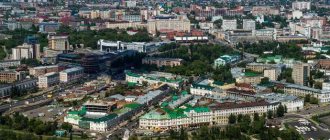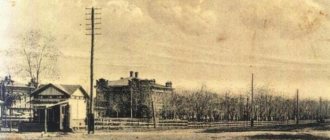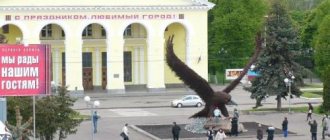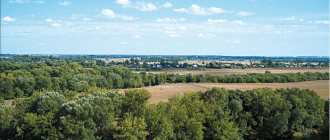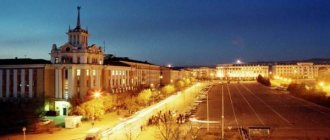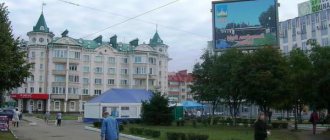The Kursk region, with its center in the city of Kursk, is included in the Central Administrative Okrug. The region borders not only with regions of the Russian Federation, but also with Ukraine. The territorial unit received official status in 1934.
By Russian standards, the region is small, with a population of 1.122 million people (Rosstat data as of January 2021). There are 28 districts in the Kursk region.
Glushkovsky and Gorshechensky
The territory of Glushkovsky shares borders with Ukraine and is home to 19,503 people. There is a distillery, sugar and bread factories here. At the Glushkovo station there is an asphalt production plant, but the main economic component of the area is agriculture. The administrative center is the town of Glushkovo.
Next on the list of districts of the Kursk region is Gorshechensky, occupying 4.7% of the entire territory of the region. The center is the village of Gorshechnoye. A little over 16 thousand people live in the area. It is on this territorial unit that the Barkalovka conservation area is located in the upper reaches of the Apochka River.
Economy and industry of the Kursk region
The economic component of the Kursk region is represented by agriculture and iron ore mining. Grain and fodder crops are grown on agricultural lands, and animals are raised. Huge areas of land are given over to pastures for meat and dairy cattle.
Industrial enterprises, which can be viewed using Yandex maps of the Kursk region, produce:
- electrical products;
- elevator equipment;
- bearings;
- drilling rigs;
- Rubber products.
The region also has several light industry enterprises that produce linen fabrics and knitwear, but the share of their products in the overall economy of the region is not large.
The construction industry is represented by several trusts that are engaged in the construction of residential buildings and roads in the region, and produce building materials and structures.
Dmitrievsky and Zheleznogorsky
Dmitrievsky has 14,854 inhabitants (the center is the city of Dmitriev), which is home to about 44.56% of the total population.
15,890 people live in Zheleznogorsk, but only 10.52% live in urban areas, in the center, the working village of Magnitny. By the way, the city of Zheleznogorsk is the administrative center, but is not part of the district.
Nightingale lands
The living symbol of the Kursk region is the nightingale. The best singers are Kursk nightingales, whose songs residents of the region listen to with pleasure in the spring. These birds were known far beyond Kursk, and they were not cheap. So avid travelers go to the Kursk outback to hear the spring trills of the Kursk nightingale.
By the way, the fame of these birds began from the moment the Korenskaya Fair appeared. Thousands of people came to the famous fair: some to sell or buy, some to talk about business, some to look at people, show themselves off, and some to listen to the nightingales. Popular rumor said that they sing louder and louder if they wet their necks with water. And in Korennaya it is special, maybe that’s why the local nightingales are different from all others with their songs... “The Kursk nightingale makes such “knees” - you won’t forget it forever! I wish I could bring such a bird home,” many people thought and asked local residents to help them. This is how the nightingale trade appeared on Kursk land. Nightingale hunters caught the best singers and sold them for a tidy sum at the Korenskaya fair to connoisseurs and amateurs. So, along with their fame, the Kursk nightingales “scattered” all over the world.
By the way, there is also a “Kursk Nightingale” museum in the region, which embodies the history of the region in the image of an elegant songbird; With the help of her magical voice, visitors get acquainted with local literature, musical works, and fine arts. The museum has more than a thousand nightingale-themed exhibits and is of interest to everyone, young and old.
Kastorinsky and Konyshevsky
More than 15 thousand people live in Kastorinsky, the center is the working village of Kastornoye. On the territory there are sugar and dairy factories, railway enterprises. There is a lot to see in the area, there are 16 burial mounds, the 18th-century Church of the Assumption of the Blessed Virgin Mary and holy springs.
In the Konyshevsky district of the Kursk region, the administrative center is the town of Konyshevka. There are few residents in the area - 8,744, and the administrative center accounts for almost 40%. In the area there are two churches of the 19th century, protected by law, and the monastery of Our Lady of the Sign.
History of the region's population
Favorable climatic conditions and proximity to trade routes contributed to the settlement of the Kursk region. Initially, northerners lived here. Important trade routes passed through their lands.
Until the end of the 16th century, most residents led a nomadic lifestyle and moved frequently. In the next 2 centuries, the settlement of the region was facilitated by the transition to agriculture. In addition to immigrants from primordially Russian territories, Lithuanians began to actively move into the Kursk region. There were many Ukrainians in the south.
Among the Russian population of the Kursk region there were many representatives of southern Russian groups. Western and Central Russian nationalities were also common, but their share was smaller.
Kursk
The Kursk district of the Kursk region is the largest, with a population of 57,692 people. In the area on the right bank of the Rat River there is an ancient Slavic settlement dating back to the 9th-14th centuries.
The head of the administration of the Kursk district of the Kursk region today is V.M. Ryzhikov.
The structure includes 17 village councils of the Kursk district of the Kursk region.
Historical reference
Kursk is an ancient Russian city. The results of archaeological excavations in recent years give reason to believe that the Kursk fortress was founded during the reign of Vladimir Svyatoslavich in approximately 982 - 984. and it was located in the area of modern Red Square of the city. The official beginning of the chronology of the history of Kursk is considered to be 1032. This date was established by historians by studying the oldest monument of church writing, “The Life of Theodosius of Pechersk,” created by the chronicler monk Nestor in the 11th century. The glory of the “Kuryans - experienced warriors” is also brought to us by the historical and literary document of the 12th century - “The Tale of Igor’s Campaign”. The Kursk fortress was a serious obstacle to the troops of Khan Batu, and in 1238 they burned it.
In the middle of the 14th century, the Kursk lands came under the rule of the then powerful Lithuania. Since 1508, the Principality of Kursk became part of the Russian state, gathered around Moscow.
In 1708, when Russia was divided into 8 provinces, the Kursk region became part of the Kyiv province. In 1719, the Kiev province was divided into 4 provinces: Kyiv, Belgorod, Sevsk and Oryol. The territory of the modern Kursk region was divided between the Belgorod and Sevsk provinces.
In 1727, the Belgorod governorship was created as part of the Belgorod, Sevsk and Oryol provinces. In 1749 it was transformed into the Belgorod province. In 1779, the Kursk governorship was formed, consisting of 15 counties. In 1797, the Kursk governorate was transformed into the Kursk province, which existed until 1928. In 1928, the transition to regional, district and district administrative divisions took place. On June 13, 1934, the Central Black Earth region was divided into two regions: Voronezh and Kursk. This date is considered the day of formation of the Kursk region.
The modern territory of the region belongs to the oldest Russian lands. The first settlements here are mentioned in the 11th century, and almost only in connection with the campaigns of Rus' against the Polovtsians and the Polovtsians against Rus'. Kursk is especially mentioned in this regard in the Tale of Igor's Campaign. In the 12th century, the appanage principalities of Kursk and Rylsk appeared. Then the Tatars came. The Kursk prince took part in the Battle of Kalka in 1223 and managed to escape, but during Batu’s campaign in 1239, Kursk was destroyed.
In 1355, the lands of the modern Kursk region, with Kursk and Rylsk, went to Lithuania, under the reign of Prince Gediminas there, and later, together with the Grand Duchy of Lithuania, to Poland. Rylsk in the middle of the 15th century was granted to Ivan Shemyachich, the son of Dmitry Shemyaka, who went over to the side of Lithuania, and already his son Vasily went over to the side of Moscow along with Rylsk and until 1523 remained the last appanage Russian prince. After his death, the Rila principality completely became part of the Moscow state.
Kursk was also located there in 1508. As a result, the Kursk lands ended up in the very south of the state and were supposed to protect it from the attacks of the Crimean Tatars. Fortified lines (cut lines) were built, to protect which guards were sent to the steppe, and fortresses. There were as many as three watchmen in Rylsk (from where the watchmen were sent), and a fortress was built in Kursk in 1591. Then intensive settlement of the region begins. Under Peter the Great's administrative reform, most of the region, including Kursk, became part of the Kyiv, later Belgorod, province, and in 1797 Kursk became a provincial city. By that time, the Kursk lands had long been no longer protected by any borders, and Kursk had a reputation as a deep province.
In 1928, the Kursk province entered the Central Black Earth Region; in 1934, the Kursk Region was formed (including Orel, Yelets, Belgorod). Modern borders were formed in 1954 with the formation of the Belgorod and Lipetsk regions. Since 1991, the region began to extend to the state border of Russia (Sumy region of Ukraine).
Ponyrovsky and Pristensky, Rylsky and Sovetsky
Almost 11 thousand people live in Ponyrovsky, the center is the town of Ponyri.
Pristensky has a population of 15.5 thousand inhabitants, the center is the town of Pristen. In the village of Kirovsky there is a museum “Command Post of the Voronezh Front”.
The Rila municipality has a population of 31,609. The center is the city of Rylsk. In the center of the village of Kapystich there is a settlement, excavations of which revealed that the settlement was founded back in the 9th and 11th centuries.
17 thousand people live in the Sovetsky district, the center is the town of Pshensky.
Sex structure of the population
In the Kursk region, the same situation with the ratio of men and women is observed as in the country as a whole. Thus, the share of women was 54.7 percent, and the share of men was 45.3 percent.
The proportion of married men is greater than the proportion of married women. For every thousand males (16 years of age and older) in the region there were 659 married people, and for every thousand women of the same age there were 528 married people. This is largely due to the larger proportion of women in the population. After all, there are 105.5 thousand more of them in the region than men.
Some residents are in so-called unregistered marriages. There are 71 such people per thousand men, and 57 per thousand women. 225 men and 143 women (per thousand people) consider themselves bachelors (celibate).
The number of divorced men is 63 per thousand and another 13 separated. For women, these figures are 91 and 13 people, respectively.
The largest proportion of men was noted in the Kursk region - 47.3 percent. And the largest proportion of women (54.8 percent) is in the Glushkovsky and Sudzhansky districts.
Solntsevsky and Sudzhansky
In the Solntsevo district, the center is the town of Solntsevo, the total number of residents of the municipal unit is 13,733. In the village of Orlyanka there is a church built in 1794.
In Sudzhansky (26,773 people), the center is the city of Sudzha. There are many industrial enterprises and 2 chalk developments. In the village of Gusevo there is the estate of P.D. Dolgorukov, and in the village of Gornal there is a large settlement.
Age structure of the population
The average age of a resident of the Kursk region is 41.3 years. Compared to the previous census, it has increased by 1.3 years. This is due to the increase in life expectancy of the population. This value is close to the average for the population of the Central Federal District, where it is 40.9 years, and for Russia as a whole - 39 years. The decline in the birth rate is also the reason for the increase in the average age of residents.
The number of young residents of the region is steadily declining. In 2002, their share was 17.14%, and in 2010 – 14.78%. The picture is similar in the country as a whole - a decrease from 18.14 to 16.19 percentage share, and in the Central Federal District - from 15.33 to 13.85.
At the same time, the share of elderly people, on the contrary, increased – from 24.82 to 25.54 percent.
